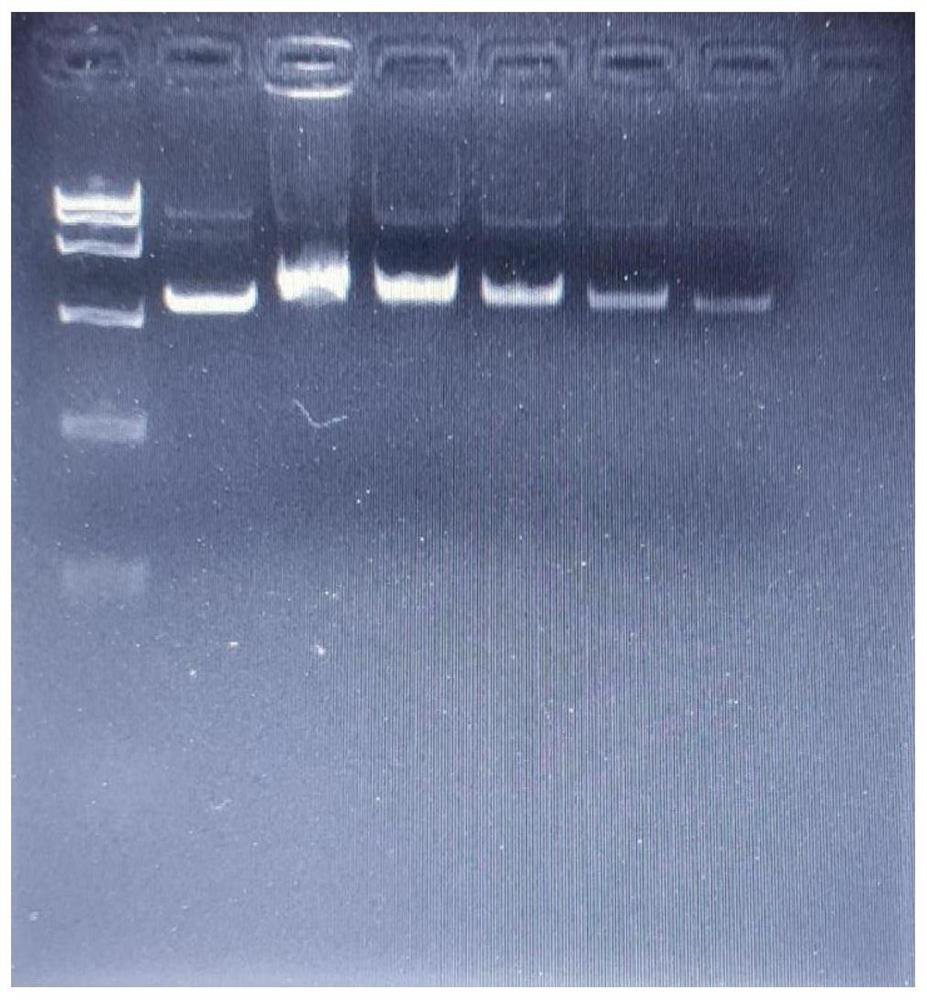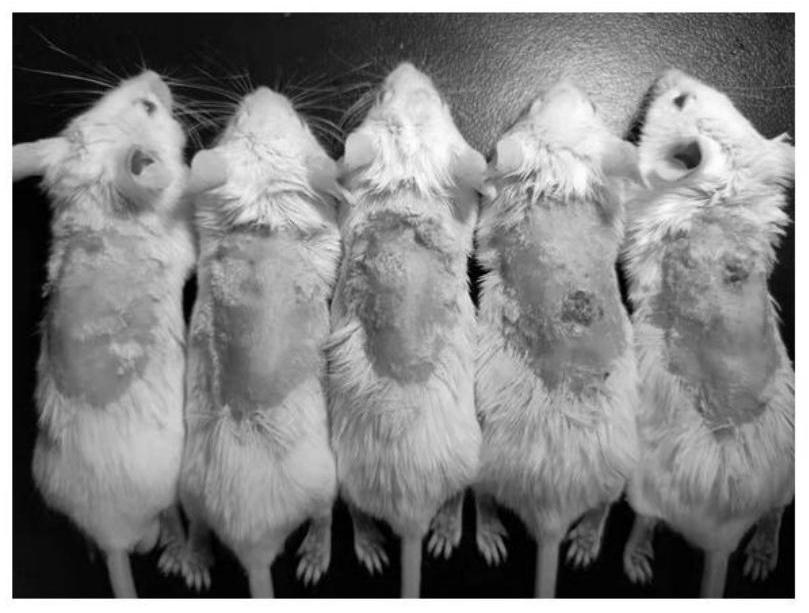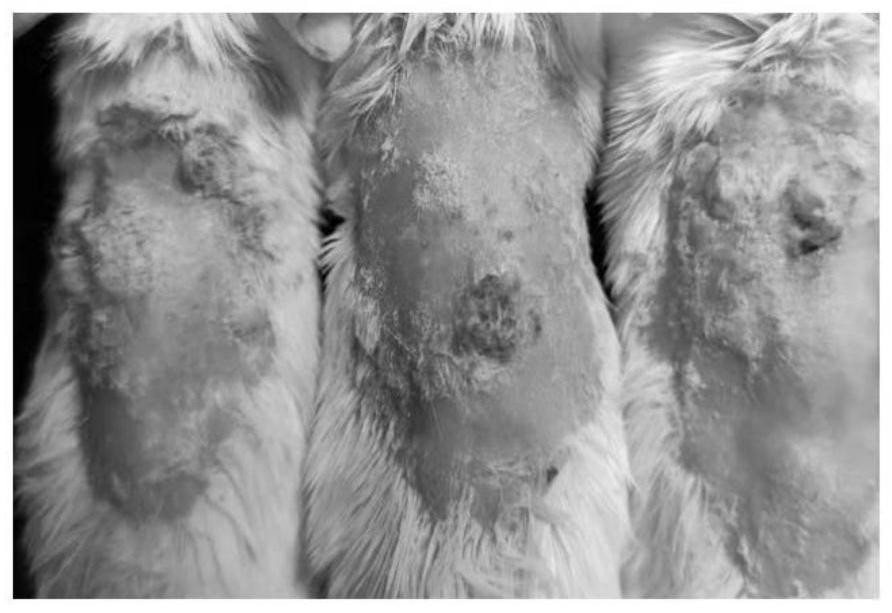Application of human hepatocyte growth factor gene in eczema treatment and microneedle medical instrument
A technology of hepatocyte growth factor and gene, which is applied in the application of human hepatocyte growth factor gene in the treatment of eczema and in the field of microneedle medicine and equipment, can solve the problems of eczema prone to repeated attacks and serious side effects, and achieve anti-inflammatory, itching, and inhibition of skin inflammation. The effect of itching and good application prospects
- Summary
- Abstract
- Description
- Claims
- Application Information
AI Technical Summary
Problems solved by technology
Method used
Image
Examples
Embodiment 1
[0054] Obtaining of recombinant plasmid vector carrying human hepatocyte growth factor gene
[0055] 1. Cell preparation
[0056] Using the mammalian cell expression vector pVAX1 (Invitrogen, catalog number V260-20, full length 2999bp) as the backbone, the plasmid pHGF carrying the human hepatocyte growth factor gene was constructed by itself.
[0057] The vector pVAX1 contains CMV promoter, BGH polyA, kanamycin resistance gene and pUC ori, among them, there is a multiple cloning site between the CMV promoter and BGH polyA, including T7 promoter and sequentially connected restriction enzyme sites point.
[0058] The CMV promoter is located at 137-724bp; the T7 promoter is located at 664-683bp; the multiple cloning site: 696-811bp;
[0059] BGH poly A: 829-1053bp; kanamycin resistance gene: 1226-2020bp; pUC ori: 2320-2993bp.
[0060] Human hepatocyte growth factor gene (full length 2.3Kb) is placed between restriction site BamH I and XbaI, thereby obtaining recombinant plasm...
Embodiment 2
[0068] Embodiment 2: Preparation of pHGF microneedle patch
[0069] The microtemplate method is one of the most commonly used preparation methods for microneedle casting. The general procedure of this method is to first rely on microelectromechanical system (MEMS) technology to make a microneedle positive mold with specific parameters, then use polydimethylsiloxane (PDMS) to copy the microneedle positive mold to obtain a microneedle template, and finally The required solution is dropped into the microneedle template, and the air in the micropores and the solution is removed by vacuuming or heating, so that the solution can better fill the pinhole groove and ensure its mechanical strength. Soluble microneedles.
[0070] Formula screening: Through research, it is found that when the concentration of hyaluronic acid increases from low to high, the hardness of the microneedles gradually increases. When the concentration reaches 250mg / mL, the hardness is good, and the hardness dec...
Embodiment 3
[0073] Embodiment 3: The therapeutic effect of human hepatocyte growth factor gene on skin eczema of BABL / c mice
[0074] Animal model: male BABL / c mice, after adaptive feeding for 3 days, were randomly divided into 3 groups: eczema model group, pHGF microneedle group and pHGF subcutaneous injection group. Remove rat hair 2cm×2cm. On d1, d2, and d3, apply 0.5% DNCB acetone solution to the skin of the shaved area on the back of the mouse for sensitization; then apply 1% DNCB acetone solution to the skin of the shaved area on the back of the mouse twice a week for stimulation, and stop after 28 days.
[0075] Administration method: Microneedle administration (only PBS solution) in the shaved area of mice in the model group, once a week; pHGF microneedles of 0.1 mg (dissolved in 100 μL of PBS) in the shaved area of mice in the pHGF microneedle group Administration, 1 time a week; 0.1 mg of pHGF subcutaneously injected into the shaved area of the mice in the pHGF subcutaneous...
PUM
| Property | Measurement | Unit |
|---|---|---|
| Concentration | aaaaa | aaaaa |
| Molecular weight | aaaaa | aaaaa |
Abstract
Description
Claims
Application Information
 Login to View More
Login to View More - R&D
- Intellectual Property
- Life Sciences
- Materials
- Tech Scout
- Unparalleled Data Quality
- Higher Quality Content
- 60% Fewer Hallucinations
Browse by: Latest US Patents, China's latest patents, Technical Efficacy Thesaurus, Application Domain, Technology Topic, Popular Technical Reports.
© 2025 PatSnap. All rights reserved.Legal|Privacy policy|Modern Slavery Act Transparency Statement|Sitemap|About US| Contact US: help@patsnap.com



